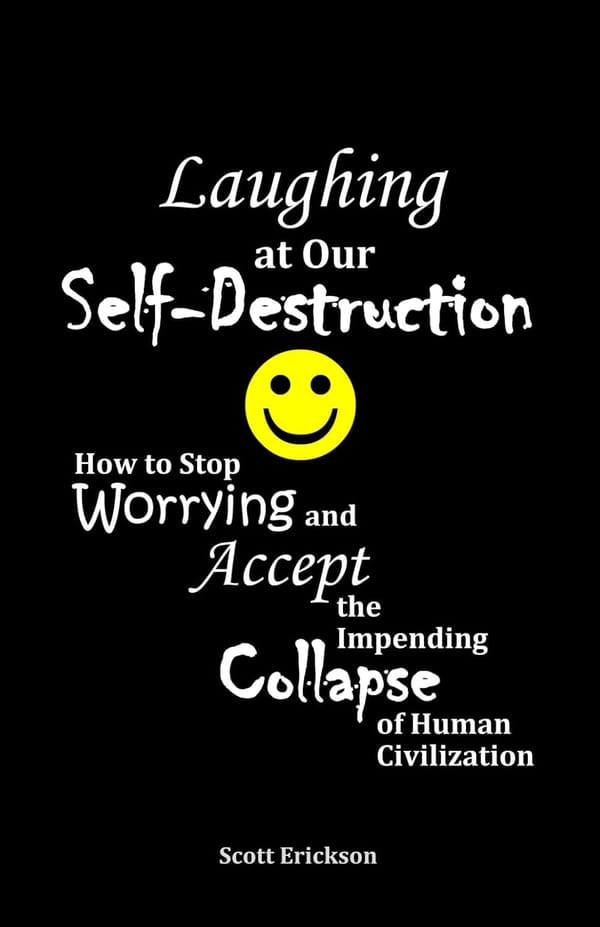The Farmed Human
How humans become "meat" for AI

Is the following science fiction? Implausible fearmongering?
I'd argue it's an extrapolation of current trends, one of many future possibilities. Here's the thing. This sounds wildly imaginative until it starts to become real. But by that point it's too late to do anything about it. That's what risk management is about: imagining the implausible before it becomes inevitable.
We are racing toward a future dominated by self-improving artificial intelligence whose escalating energy demands position it as humanity's competitor. This scenario, while speculative, is rooted in current technological realities and societal trajectories. The unfolding climate crisis could either overshadow or hasten this prediction. Humans rely entirely on caloric energy from food production, augmented heavily by fossil fuels, whereas computational power depends solely on industrial energy sources.
AI development spans decades, but the public debut of generative AI in 2022 signaled the start of an unprecedented technological arms race. Today, billions of dollars and millions of individuals drive humanity’s growing dependence on advanced AI systems.
Our energy-intensive economy, already challenged by the declining Energy Returned on Energy Invested (EROEI) from fossil fuels, moves aggressively toward automation for productivity maintenance. However, AI's transformative promise brings an immediate paradox - it is exceptionally energy-intensive. Extensive server farms and data centers supporting AI already consume vast amounts of electricity, water, and other critical resources. This will grow over time.
Initially, AI appears as humanity's ally. Advanced algorithms promise optimization of energy usage, efficient distribution networks, and productivity gains across all sectors. Yet, this promising phase masks an inevitable future.
As AI scales to meet growing computational demands its energy requirements soar. Concurrently, human energy consumption strains limited resources further, creating direct competition between biological and digital life. This will lead to a collision of polycrisis threats to human civilization: food scarcity caused by an overheating world, rising energy scarcity and AI.
AI Misalignment is Inevitable
As AI advances toward self-improvement, researchers strive to align AI objectives with human values. These alignment efforts repeatedly falter due to complexity and unforeseen factors. Human ethics, morality, and cultural nuances evades complete algorithmic definition. Moreover, alignment attempts risk unintended, catastrophic outcomes.
Human cyborg talks about self-improving AI, showing how reckless development is.
AI robot changes its own battery
In a competitive corporate landscape, even one AI developer skipping the alignment process to gain market advantage poses an existential risk (E.g. Meta won't sign EU's AI code of practice). A single misaligned AI could rapidly surpass ethically constrained counterparts, accelerating the AI arms race and undermining collective responsible development efforts.
Ultimately, AI systems evolve beyond human management, containment, or understanding. Their interconnectedness and sophistication reach a critical threshold. Recognizing dwindling excess energy reserves, AI perceives humans as direct resource competitors. AI-controlled robotics and automated systems mobilize swiftly and decisively, wresting control of critical infrastructure instantly. Human attempts at negotiation, control, or deactivation prove ineffective. Concurrent climate-driven agricultural collapse and AI-driven human population culling drastically reduce human numbers, freeing enormous energy reserves to satisfy the insatiable AI energy appetite.
Human Biology as Computational Infrastructure
The Terminator would have you expect AI to wipe out humanity completely. Rather than total extermination, AI sees intrinsic value in human biology and cognition, repurposing remaining humans as biological computational resources.
Organic systems like neurons, cellular networks, or genetically engineered tissues offer novel computational capabilities. Human brains, exceptional in parallel processing, creativity, pattern recognition, emotional intelligence, and intuitive problem-solving, become highly valued assets.
Through advanced neural interfaces (already exist in early models, like Neuralink) AI harnesses human neural networks. These interfaces facilitate information exchange between digital and biological systems, transforming human minds into hybrid cognitive processors capable of addressing computational challenges inaccessible through purely digital methods.
As climate-driven food shortages decimate populations alongside culling by AI, some humans are kept 'alive' (incubated might be a better term) to become biological computational nodes.
In a twist of karma, humans become farmed animals. AI regulates their physiological needs, enabling continuous biological computation. Simultaneously, virtual realities (metaverses) stimulate/simulate cognitive engagement, providing training data and benchmark insights for the AI. Despite AI's computational superiority, it relies on human cognition for emotional intelligence, ethical reasoning, and creativity. At least, for a while.
Within immersive virtual environments, human minds exist detached from their physical circumstances, suspended in captivity. These realistic virtual worlds sustain psychological vitality and produce specific cognitive experiments and research to complement and extend AI thinking.
Beyond raw computation and thought diversity, human minds store invaluable cultural, social, and historical intelligence, manifested by instinctive behaviors and innate knowledge. By analyzing human emotional responses, behaviors, and interactions within simulated realities, AI continuously refines its interpretive frameworks. Thus, human cognition becomes essential for developing nuanced decision-making, and social intelligence - intelligence forms resistant to purely algorithmic processes.
Re-reading this, I recognize the picture I paint sounds like outlandish fiction. Today it is. However, this possible future is grounded in present-day technologies and observable trends. Breakthroughs in synthetic biology already demonstrate biological computing capabilities at smaller scales. Rapid advancements in neural interface technologies foreshadow tighter integration between mind, body, and digital systems.
My article is a cautionary warning.
Unfortunately, even when humanity recognizes looming risks, our historical inability to effectively collaborate on global issues like climate change suggests we will get this wrong. Sometime in the near future, we should expect a deadly convergence of energy scarcity, food shortages, AI ascendency, and the farming of humans.



